Introduction to lettuce: Lettuce is a healthy leafy vegetable grown mainly for its delicious green leaves which have a very mild taste. Lettuce is cultivated not only for its leaves but also for its stems and seeds. Lettuce is a fast-growing vegetable crop. Lettuce is a crispy, green staple in any salad around the world. Although the Lettuce you buy at the supermarket is rich in vitamins, minerals, and nutrients, the Lettuce you grow at home will taste much better. Let’s check out how to grow lettuce at home with seeds and without seeds in India.
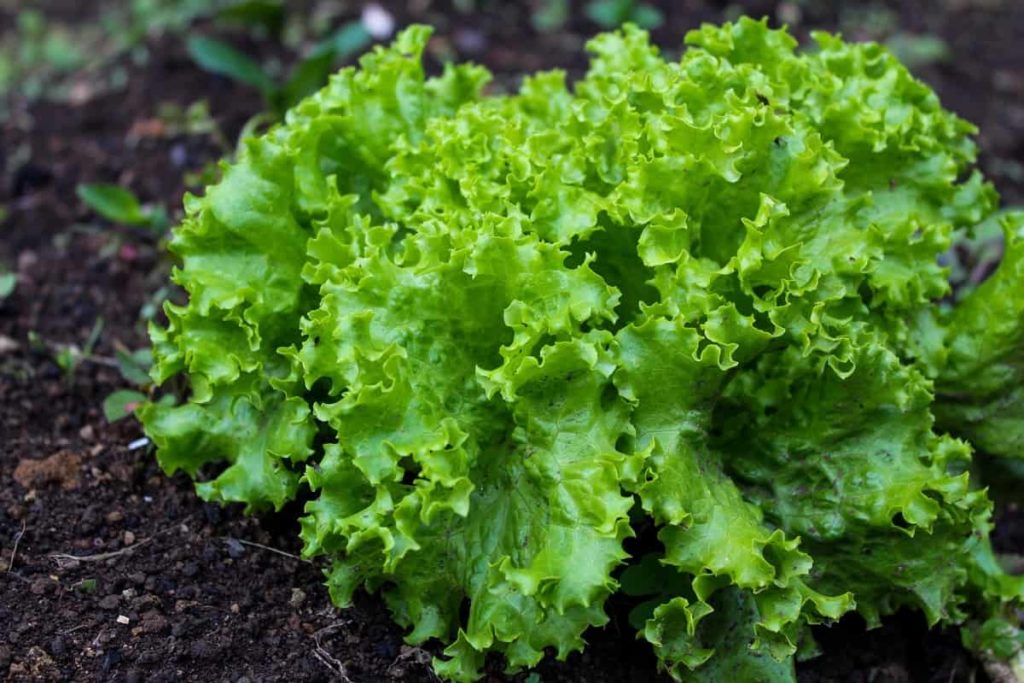
Tips to grow lettuce at home
- Common Name – Lettuce
- Botanical Name – Lactuca sativa
- Vegetable Type – Green Leaf
- Season – February-April; September-November
- Germination time – 6-10 days
- Soil pH 5.5 to 6.8
- Germination temperature – 15°C – 27°C
- Sunlight – first 2 weeks – 5-6 hours; After 3 weeks – 8 hours; Winter – 6-7 hours
- Soil – It needs loamy and well-drained loose soil
- Water – Twice a day in summer; Winter – when needed
- Insects – Caterpillars, Insects, Aphids, Maggots, Beetles, etc.
- Diseases – Mildew, Leaf Spots, Rot, Yellow Spots, etc.
- Companion Plants – Theme, Oregano, Basil, Tomato, Pepper, Broccoli, Cabbage
- Harvesting time – 30-60 days
In case you miss this: Earn Excellent Income Returns from Lettuce Farming
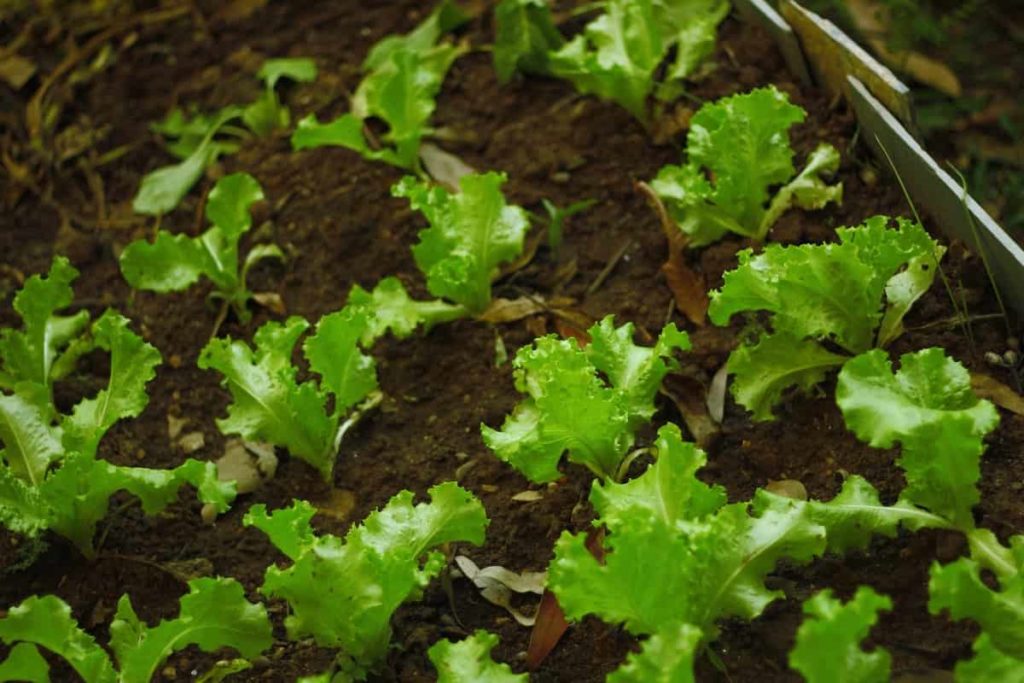
Types of lettuce
- Looseleaf
- Oakleaf
- Romaine
- Butterhead
- Iceberg
- Summer crisp
Soil and sunlight requirement to grow lettuce
Soil pH should be neutral around 5.5 to 6.8. Use a less compact, well-drained soil / potting mix to plant Lettuce. Use a good amount of organic manure / bio-fertilizer / vermicompost to enrich the soil. If you are using a 2 kg potting mix or soil, use 1 kg organic manure/vermicompost. Lettuce requires partial sun, 3-4 hours of sunlight, with some shade.
Grow lettuce from seeds
Growing Lettuce from seeds is easy and very beneficial. Lettuce seeds are very straightforward to plant. But there are different ways you can use it, and there are some important things to keep in mind to end up with healthy plants.
In case you miss this: Top 50 Herb Farming Tips, Ideas, and Techniques
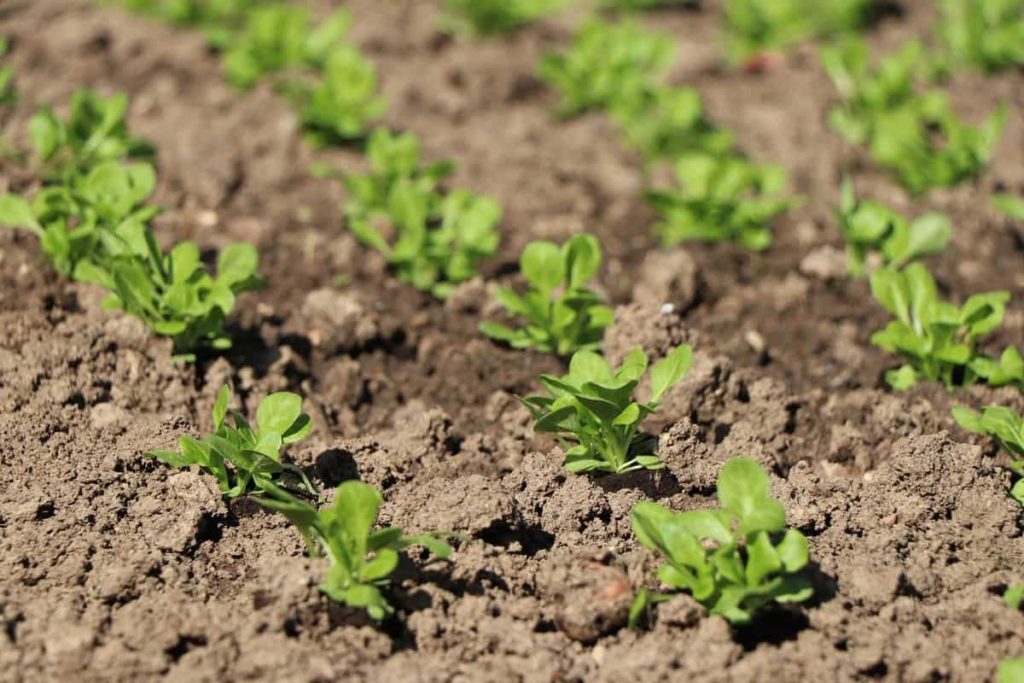
When to plant Lettuce seeds?
Lettuce seeds grow best in cool spring or autumn temperatures. If it’s too hot, they won’t germinate. Therefore, the best time to plant Lettuce seeds is in early spring, or once the temperature starts to cool down in late summer or early autumn.
Lettuce seed germination time
Generally, Lettuce seeds take 6-10 days to germinate. In perfect condition, it can be less than 2 days. If the soil is too hot, dry, or wet, or if there is no light, it will stop germination. So, if your Lettuce seeds are not growing, check the temperature, light, and humidity levels.
Sow the seeds in clusters at a distance of 20-30 cm or 8-12 inches on well-drained soil. Or use plants to save up to four weeks of germination time. When the plants are about 4 cm tall, they are the thinnest but strongest sprouts. Leaf Lettuce seeds themselves, but if you want a continuous supply, sow every four weeks.
Care: One week before planting seeds in the soil, work by adding some compost or organic matter in the soil, so that the Lettuce plant is well fed for its rapid growth. Lettuce needs fertilizer that is high in humus and nitrogen. Choose a slow-acting fertilizer to be applied to the soil three weeks after planting. The most important thing is to save soil moisture. Because Lettuce leaves are large, a lot of water can be lost through breathing, so check your leaves regularly and water them when they look light wrinkled or dry.
In case you miss this: Herb Gardening For Beginners – How To Start
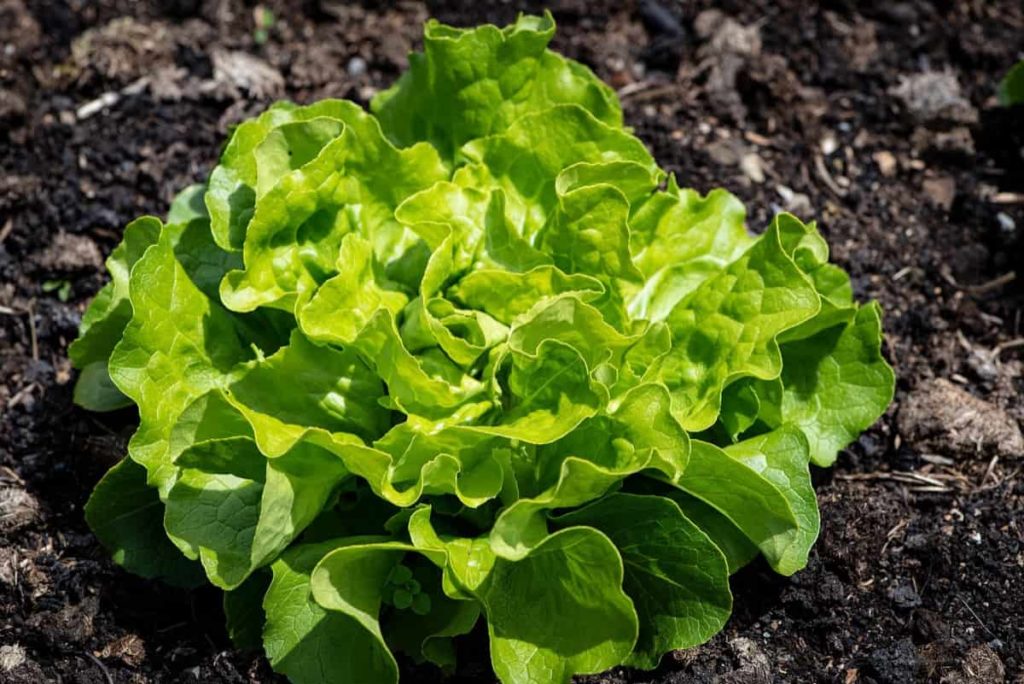
Why won’t my lettuce seeds germinate?
If your Lettuce seeds do not germinate, they are probably old. Otherwise, you may have planted them too deeply, or the soil is too hot, too wet, or too dry.
Process of growing lettuce without seeds
This new experiment without seeds has been completely successful, and in this case, we took a Lettuce and grow it from its stem, and got a new Lettuce from it. A very interesting experience to do at home and eat Lettuce regularly. To propagate anything, you will need some cuttings. You can also grow Lettuce from seeds but this is a very easy way.
Getting a Lettuce cutting is easy, as you can get cuts from any Lettuce purchased from farmer’s markets or local grocery stores. All you have to do is cut the leaves an inch from the bottom and keep the rest of the stem. Not all varieties work well with replanting, but it’s worth a try because you’ve already paid for the food.
Grow lettuce by using old lettuce stems in water
If you want your Lettuce to grow, you can take any cuttings that grow with water and transfer them to pot. This way you can continue your indoor garden all year round.
- Cut off the tip of the Lettuce stalk. Make sure you don’t cut the stumps too small. Leave about 1–2-inch leaves.
- After that, place the stem in a small container of water. Make sure the water surface covers the roots. Use about 1/2 inch of water.
- Place the stem and container near the window. A window that receives at least a few hours of light a day will suffice.
- Change the water in the container every day and this is to prevent the water from becoming dirty and moldy. Unclean water can cause Lettuce to rot.
- Check out your growing Lettuce. Within 2 days you will see the first few leaves emerge from the center of your stem. You may notice that some of the leaves that survive the last stalk will turn brown and have spots.
- Plant your Lettuce in potting soil. It should be ready for planting after about 1 week or when the leaves reach about 3 inches above the cut stem. And, make sure the soil covers the roots but not the old leaves.
- Put your planted Lettuce back in the sun and then water the soil daily to keep it moist. Watch your Lettuce grow longer. There may be times when you don’t see much upward movement. Check the center, and you may notice that small leaves are forming instead.
- Harvest the leaves. Once the leaves are large enough to make a small salad, start collecting. Break or cut the leaves and compost the stem. The harvest height is 4 to 6 inches.
In case you miss this: Fast Growing Vegetables, Tips, Techniques
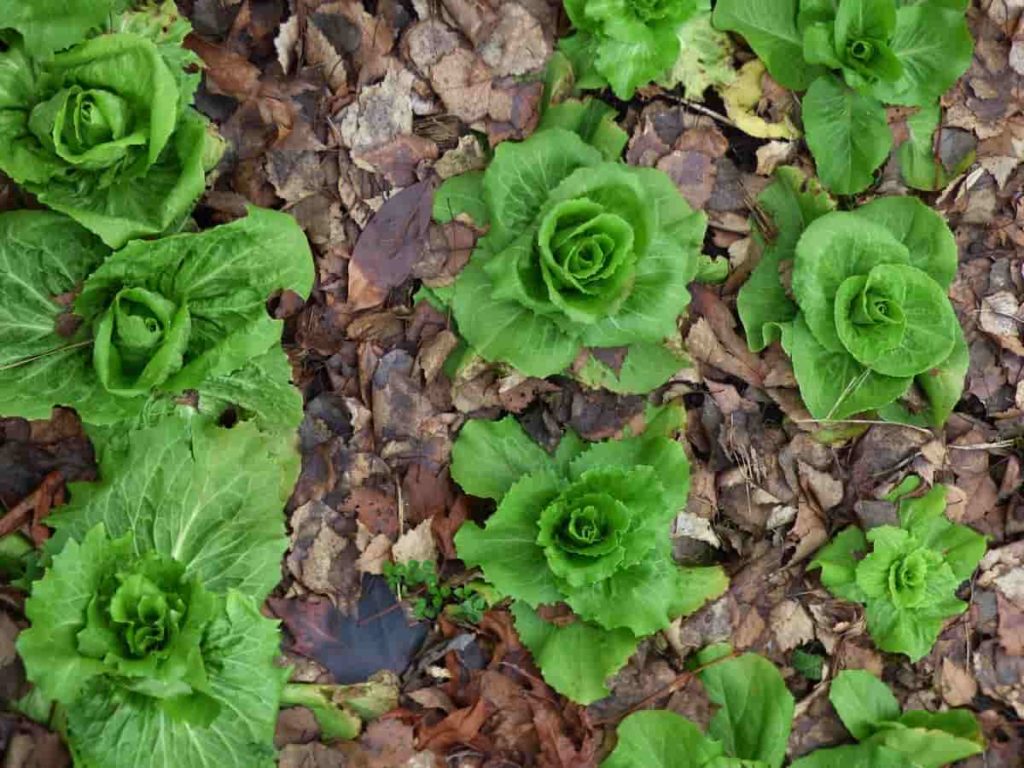
How often should lettuce be watered?
Lettuce roots are shallow, so the plants need consistent watering. Check at least twice a week and water if the soil is 1 inch deep. Lettuce containers should be watered more frequently than garden beds, especially in summer.
Pests and diseases that harm lettuce
Snails, slugs, and earwigs enjoy fresh Lettuce. Crops become bitter due to stress due to irregular water, food, and poor soil condition. Common pests that affect the Lettuce crop are aphids, which can be prevented by regular watering and soil inspection. White mold is a fungal disease that can affect your crop. This is usually due to lack of oxygen, so keep your soil moist, but also well-drained.
Lettuce harvesting
Lettuce is a ‘cut and comes again’ plant when it comes to harvesting. This means that if you apply Lettuce once, you can harvest it several times. Let’s take a look at how you can cut the Lettuce that you have spent weeks nurturing with love and care. Always harvest Lettuce in the early morning hours. During this time the leaves will be fresh and crisp. If you can’t harvest Lettuce in the morning, you can always do it in the evening. But, before you go to your garden with pruning tools, water the plants and wait 15-20 minutes.
In case you miss this: Sustainable Agriculture in India, Policies, Examples, and Practices
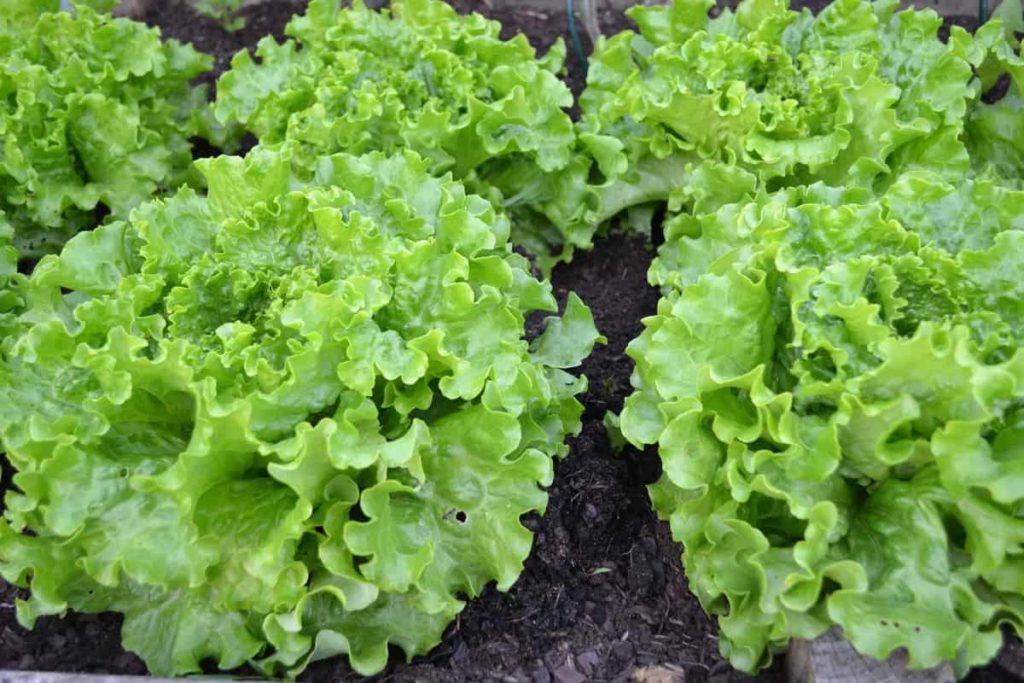
The best time to harvest Lettuce leaves is when they grow to 4-6 inches. You can also chop young leaves which give the salad a very good taste. To promote re-growth during pruning, choose external leaves. If you are using scissors for cutting, cut 1 inch above the base of the leaf. To keep Lettuce leaves fresh and aged, wash them before use.
It is always difficult to store green leafy vegetables like Lettuce. If you still want to store Lettuce leaves, wrap them in a dry newspaper or paper towels and then store them in the freezer. Lettuce stored in the freezer will stay fresh for at least a week or two. If your Lettuce leaves have a bitter taste, you can refrigerate them for a day to get rid of the bitterness.
- Types of Pesticides Used in Agriculture: A Beginner’s Guide
- Economical Aquaculture: A Guide to Low-Budget Fish Farming
- 15 Common Planting Errors That Can Doom Your Fruit Trees
- How to Make Houseplants Bushy: Effective Tips and Ideas
- Innovative Strategies for Boosting Coconut Pollination and Yield
- Pollination Strategies for Maximum Pumpkin Yield
- The Complete Guide to Chicken Fattening: Strategies for Maximum Growth
- Natural Solutions for Tulip Problems: 100% Effective Remedies for Leaf and Bulb-Related Issues
- Revolutionizing Citrus Preservation: Towards a Healthier, Greener Future
- Natural Solutions for Peony Leaf and Flower Problems: 100% Effective Remedies
- Maximizing Profits with Avocado Contract Farming in India: A Comprehensive Guide
- Natural Solutions for Hydrangea Problems: 100% Effective Remedies for Leaf and Flowers
- The Ultimate Guide to Choosing the Perfect Foliage Friend: Bringing Life Indoors
- From Sunlight to Sustainability: 15 Ways to Use Solar Technology in Agriculture
- The Ultimate Guide to Dong Tao Chicken: Exploring from History to Raising
- The Eco-Friendly Makeover: How to Convert Your Unused Swimming Pool into a Fish Pond
- Mastering the Art of Delaware Chicken Farming: Essentials for Healthy Backyard Flocks
- 20 Best Homemade Fertilizers for Money Plant: DIY Recipes and Application Methods
- How to Craft a Comprehensive Free-Range Chicken Farming Business Plan
- Brighten Your Flock: Raising Easter Egger Chickens for Beauty and Bounty
- How to Optimize Your Poultry Egg Farm Business Plan with These Strategies
- Subsidy for Spirulina Cultivation: How Indian Government Schemes Encouraging Spirulina Farmers
- Ultimate Guide to Raising Dominique Chickens: Breeding, Feeding, Egg-Production, and Care
- Mastering the Art of Raising Jersey Giant Chickens: Care, Feeding, and More
- Ultimate Guide to Raising Legbar Chickens: Breeding, Farming Practices, Diet, Egg-Production
- How to Raise Welsummer Chickens: A Comprehensive Guide for Beginners
- How to Protect Indoor Plants in Winter: A Comprehensive Guide
- Ultimate Guide to Grow Bag Gardening: Tips, Tricks, and Planting Ideas for Urban Gardeners
- Guide to Lotus Cultivation: How to Propagate, Plant, Grow, Care, Cost, and Profit
- Agriculture Drone Subsidy Scheme: Government Kisan Subsidy, License, and How to Apply Online
- Ultimate Guide to Raising Araucana Chickens: Breed Profile, Farming Economics, Diet, and Care
- Bringing Hydroponics to Classroom: Importance, Benefits of Learning for School Students
- Ultimate Guide to Raising Polish Chickens: Breed Profile, Farming Economics, Diet, and Care
- Ultimate Guide to Raising Australorp Chickens: Profile, Farming Economics, Egg Production, Diet, and Care
- Silkie Chicken Farming: Raising Practices, Varieties, Egg Production, Diet, and Care
- Sussex Chicken Farming: Raising Practices, Varieties, Egg Production, Diet and Care